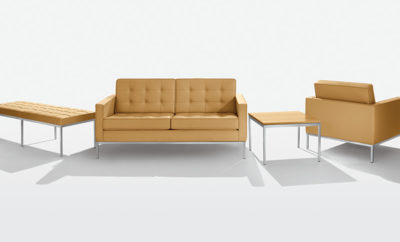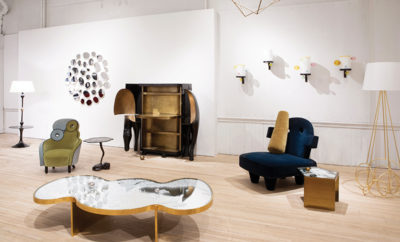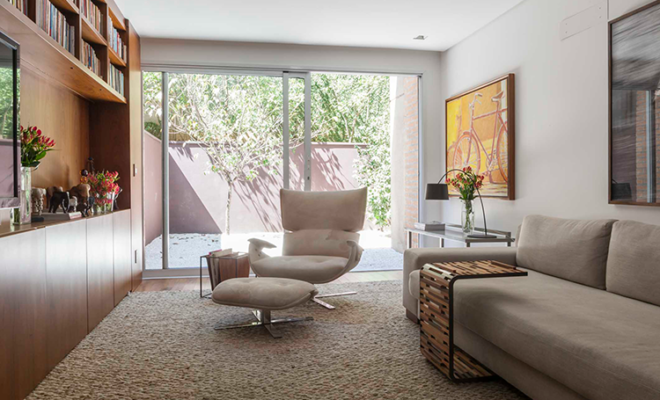 In the joint library-TV room are a Paulistana lounge armchair by Zalszupin, designed 1960, and one section from a Tríplice side table by Domingos P. & Sarkis S., 2012. Photographs by Ruy Teixeira.
In the joint library-TV room are a Paulistana lounge armchair by Zalszupin, designed 1960, and one section from a Tríplice side table by Domingos P. & Sarkis S., 2012. Photographs by Ruy Teixeira.
Design
Etel’s Lissa Carmona: At Home with Design
BRAZILIAN ENTREPRENEUR LISSA CARMONA knows design. The daughter of renowned designer Etel Carmona, she grew up surrounded by it and inherited not just design know-how but also a passion and respect for well-crafted furniture. After joining Etel, the furniture manufacturing firm founded by her mother, she expanded the company’s commitment to Brazilian design by successfully launching reeditions of classic pieces by such wellknown names as Oscar Niemeyer, Lina Bo Bardi, and Jorge Zalszupin. Along the way, she also edited several books on design and curated a number of exhibitions. So when it came time to furnish her own home, Carmona had plenty of experience and inspiration from which to draw. But she also had a very clear idea of what a home should be. “Design plays a very important role in making a home—it is one’s most intimate space, like a personal temple,” she explains. “I always say that good architecture has the power to move us and transform spaces and people. In creating a home, we bring that same power to a smaller, yet no less important, scale.”
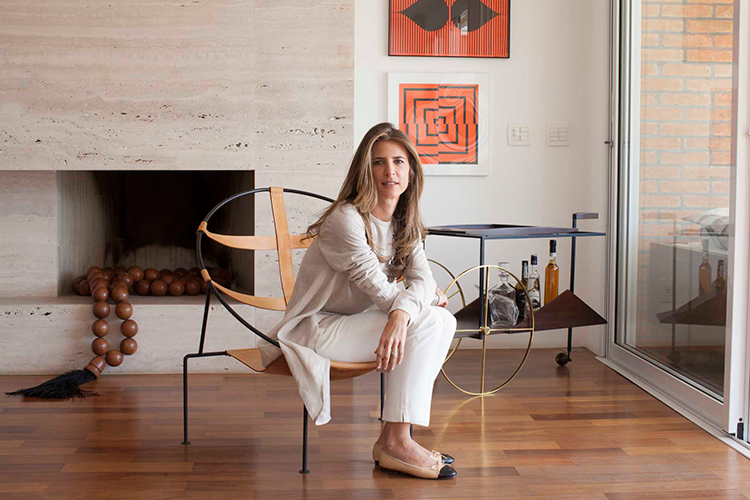
Lissa Carmona, CEO and owner of Etel, at her home in São Paulo, Brazil. She is sitting in an FDC1 lounge armchair by Flávio de Carvalho, designed 1939, in front of a JZ tea trolley by Jorge Zalszupin, designed 1959, and artwork by Rubem Ludolf.
Carmona had bought a four-bedroom, multifloor town house, part of a small, gated community in São Paulo designed by Luiz Fernando Rocco. She liked how it felt very private even though within a complex with other houses and how the spacious rooms were distributed on the different floors, but felt there were some adjustments to be made. She tapped architect and friend Lia Siqueira to help make it into a home that could accommodate Carmona’s busy family of four while also reflecting her personal aesthetic, one that favors simplicity and clean lines, craftsmanship, and light. “Lia understands my deep appreciation for the works of John Pawson, Jean Nouvel, Tadao Ando, and of course, Niemeyer,” Carmona says. One of Siqueira’s first steps was to open up the space, allowing movement between rooms and integrating the garden, with its fruit trees and even a pair of toucans that visit regularly.
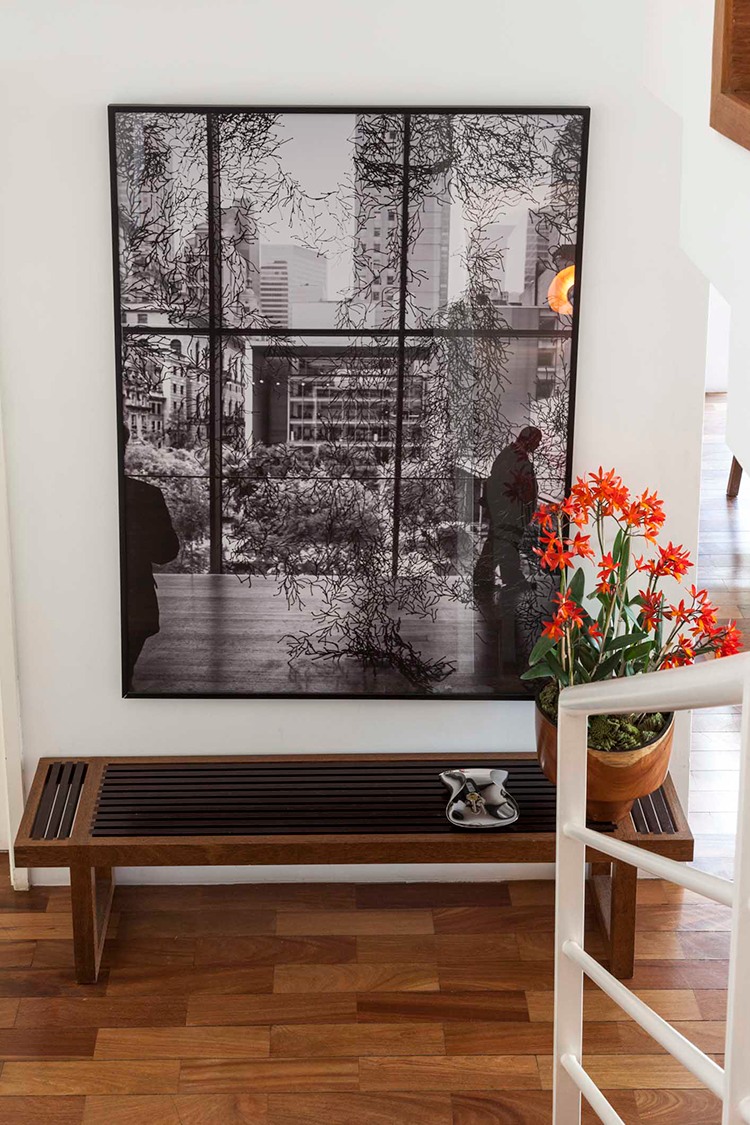
At the foot of the stair stands a prototype for the Ripado bench by Lissa’s mother, Etel Carmona, 2000, below a photograph of the Museum of Modern Art in New York City by Jomar Bragança.
With the structure of the spaces resolved, Carmona tackled the decor with the help of interior designer Marina Linhares. Choosing furniture, however, presented a bit of a challenge for Carmona. “That was very hard,” she admits. “It is very difficult when you have so many wonderful choices. Sometimes I can’t resist the temptation of rotating my pieces, but even changing them often, I do have some favorites, like my bed, designed by my mother.” Also among her most beloved objects are such iconic pieces as the JZ tea trolley and the Ipanema armchair by Jorge Zalszupin, the Polish-born mid-century designer who became an important figure in Brazil’s modern design movement and is also the subject of a monograph edited by Carmona.
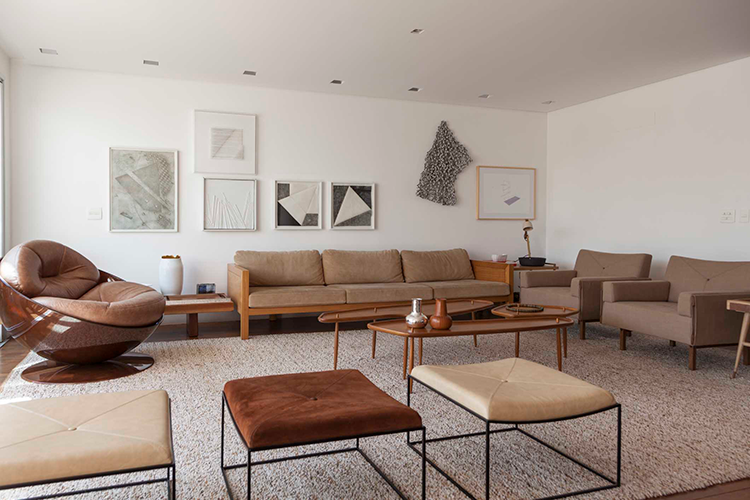
In the living room is an Esfera lounge armchair by Ricardo Fasanello, designed 1970, next to a São Conrado sofa by Salles, 2003. In the foreground are three more Capri benches by Zalszupin.
An avid reader, Carmona has eclectic taste in literature, ranging from the poems of Portuguese writer Fernando Pessoa to the short stories of the Japanese Nobel laureate Yasunari Kawabata, and has accumulated quite a collection of books. So one important design consideration was where to store all of them. “Books for me are the soul of my temple, so in all the rooms you will find bookshelves,” Carmona says. One is an ingenious rotating concept by her mother in the office area.
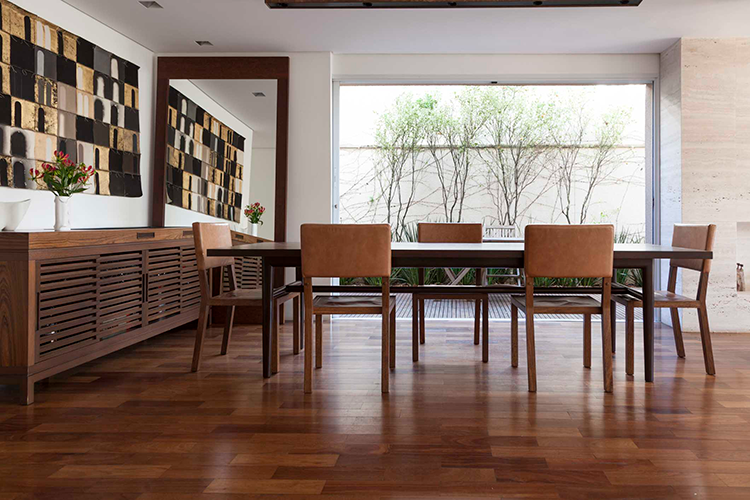
Triz dining chairs by Claudia Moreira Salles, 2003, surround a B&P dining table by Branco & Preto, designed 1952.
Below the Roberto Mícoli artwork is a Villa Rica sideboard by Etel Carmona, 2006.
An equally well-curated art selection complements the well-thought-out living environment. “I have many art interests, but what I choose to bring inside my home are pieces that I have a more personal connection with, or that have an interesting story,” Carmona explains. “Sometimes it’s an artist I know, sometimes it’s an art piece by a designer that connects with his or her work. And sometimes, something that transports me elsewhere, like the photograph of the Museum of Modern Art by Jomar Bragança at the bottom of the staircase—I love coming downstairs in the morning and seeing it, as if I am actually there.” In the living room, breaking the mostly monochromatic, neutral interior palette, are two bright orange works by Brazilian optical artist Rubem Ludolf that are also favorite pieces. “They’re an optical provocation,” she says, “and with such constructive simplicity, they fill my eyes and establish a direct dialogue with the modern furniture close by.”
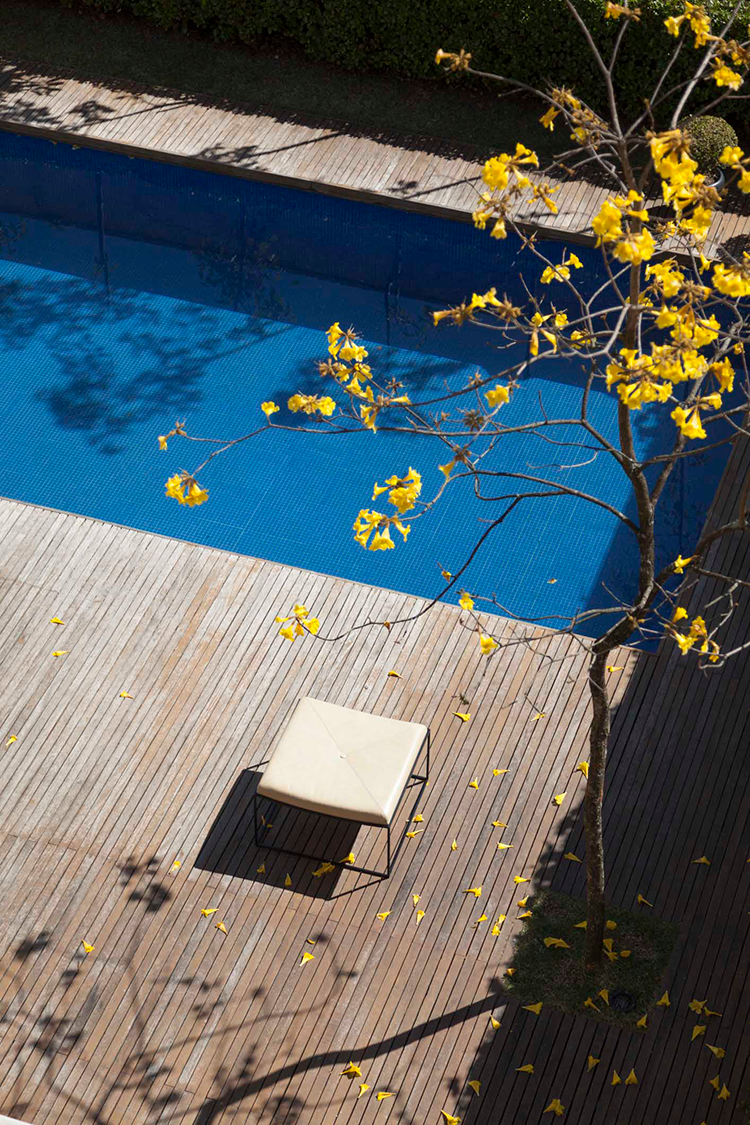
A Capri bench, designed in 1950 by
Zalszupin, adorns the pool deck.
The house certainly features the best of Brazilian art and design, yet does so with a down-to-earth, informal elegance that is also quintessentially Brazilian. It’s a real home—where people live, sleep, eat, and come together—rather than a design showcase. In short, it’s good design put to use. “My home combines my minimalistic aesthetic with the pragmatism of a rushed everyday life,” Carmona says. “I see my home as my place of rest, of recharging myself, connecting with my dear family and friends.”



